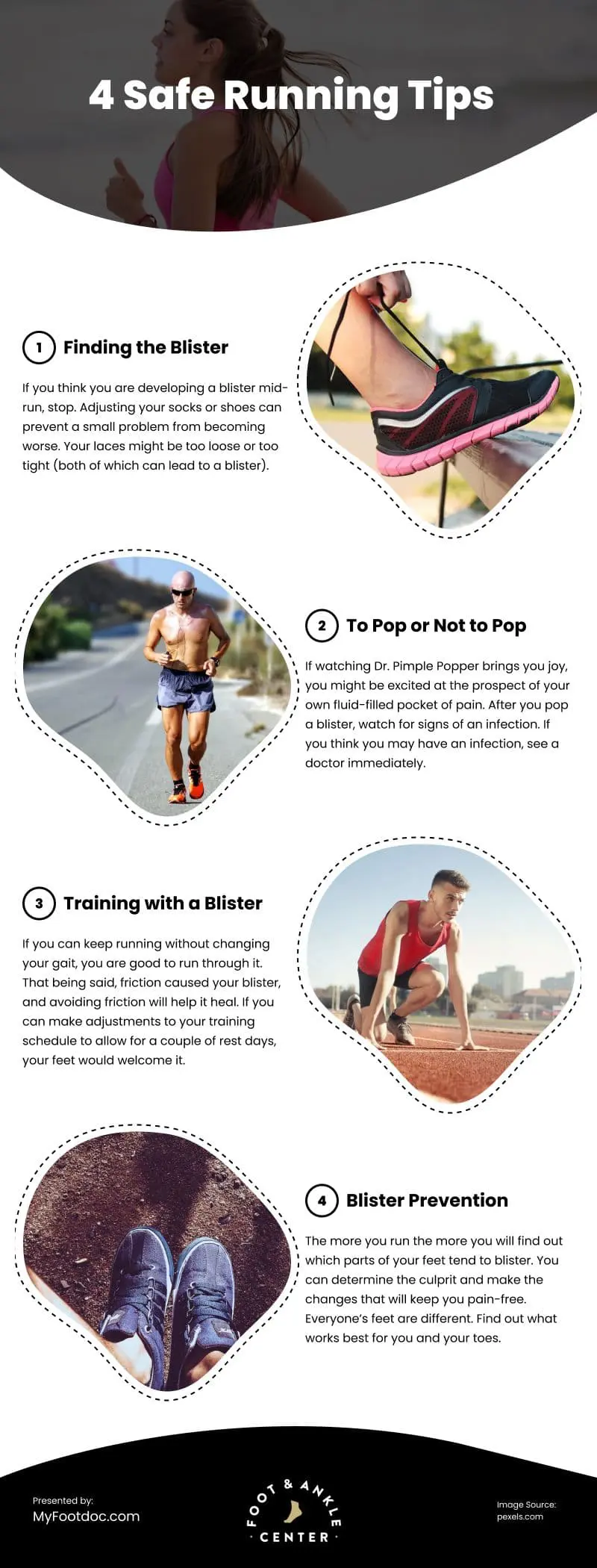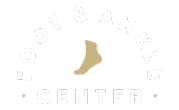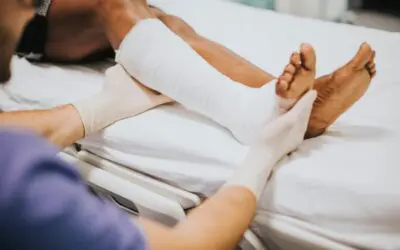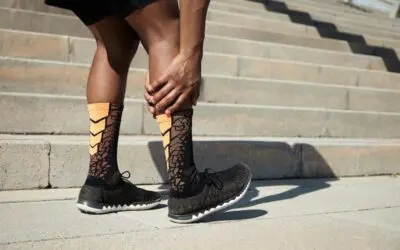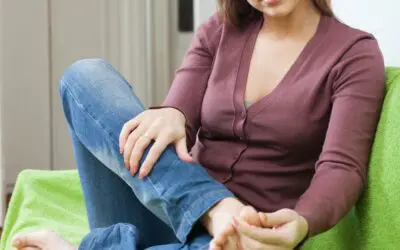You are two miles into a five-mile run. Your legs feel great. Your pace is on track. Your breathing is nice and steady. And then you feel it: the warmth caused by friction on your foot, letting you know you have a new blister. Do you stop? Do you power through? Do you pop it? Do you ignore it? This guide will help you navigate running with blisters.
Finding the Blister
If you think you are developing a blister mid-run, stop. Adjusting your socks or shoes can prevent a small problem from becoming worse. Your laces might be too loose or too tight (both of which can lead to a blister). Finding the cause of the blister and making adjustments right away can help a minor issue stay minor. You can finish your run.
After your run, apply a bandage or moleskin to the area to help protect it from further damage.
To Pop or Not to Pop
If watching Dr. Pimple Popper brings you joy, you might be excited at the prospect of your own fluid-filled pocket of pain. Before you grab your sterile needle, here are some things to consider:
- The fluid in the blister contains nutrients that help the blister to heal appropriately.
- The skin over the blister helps protect the new skin underneath.
- Keeping the blister intact will help it heal faster.
An untouched blister should heal in about two weeks. If your impatience and your pull to pop it win, be sure to follow these guidelines:
- Wash the blister thoroughly.
- Use a sterilized needle to make a small hole.
- Squeeze gently to remove all the clear liquid.
- Leave the skin intact as a protection for the vulnerable skin underneath.
- Dab the hole with hydrogen peroxide to prevent infection.
- Apply a bandage.
An alternative would be to visit a podiatrist to help you drain the blister in a sterile way.
After you pop a blister, watch for signs of an infection. Redness, pus, swelling, and increased pain are all signs that your blister picked up some bacteria. If you think you may have an infection, see a doctor immediately.
Training with a Blister
The main question on every blistered runner’s mind is: Can I still run through this?
Well, let’s be honest. A runner is probably not going to slow down much for a blister. So, a better question would be: What is the best practice for running while blistered?
What you want to avoid with a blister is letting it change your form. A little pocket of pus isn’t going to hurt you in the long run, but babying it and consequently spraining your ankle might. Blisters don’t typically warrant a trip to a podiatrist, but if you become injured trying to baby one, you will cause much more significant damage. Repairing torn Achilles tendons will be much more painful than a blister.
If you can keep running without changing your gait, you are good to run through it. That being said, friction caused your blister, and avoiding friction will help it heal. If you can make adjustments to your training schedule to allow for a couple of rest days, your feet would welcome it.
Blister Prevention
Blisters are most easily dealt with before they even appear. A few simple steps can help you prevent your feet from looking like bright red bubble wrap.
- Choose the right size of shoes. When shoe shopping, remember your feet will swell during runs. Opt for about a half size bigger than your typical shoe size.
- Select socks smartly. Invest in some quality moisture-wicking socks. Alternatively, wearing two pairs of thin socks can help alleviate some friction.
- Reduce rubbing. If you know where you are susceptible to blisters, putting some Vaseline or Body Glide on the spot can help reduce the friction in the area. You can also use Moleskin as a preventative measure, not just to treat a formed blister.
Be conscious of how you hold your feet while you run. If you tend to tense your feet and claw your toes, you are creating unnecessary friction on the tips of your toes. Try to relax your feet (easier said than done while you’re running). If you are breaking this clawing habit, chances are you need to build up your stability as well.
The more you run the more you will find out which parts of your feet tend to blister. You can determine the culprit and make the changes that will keep you pain-free. Everyone’s feet are different. Find out what works best for you and your toes.
Video
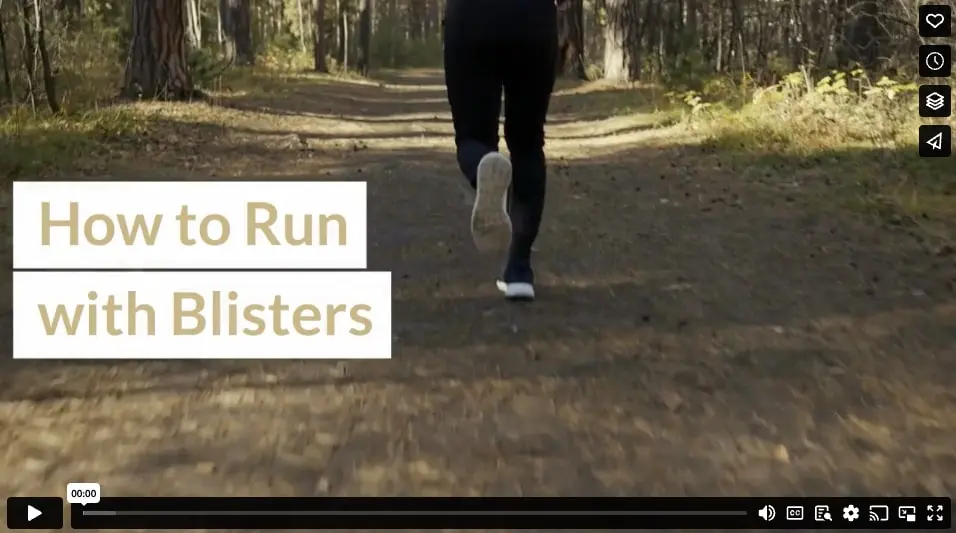
Infographic
Running with blisters can be painful, and knowing how to deal with them is essential. Check out our infographic guide on running with blisters to learn how to manage them effectively and keep going.
